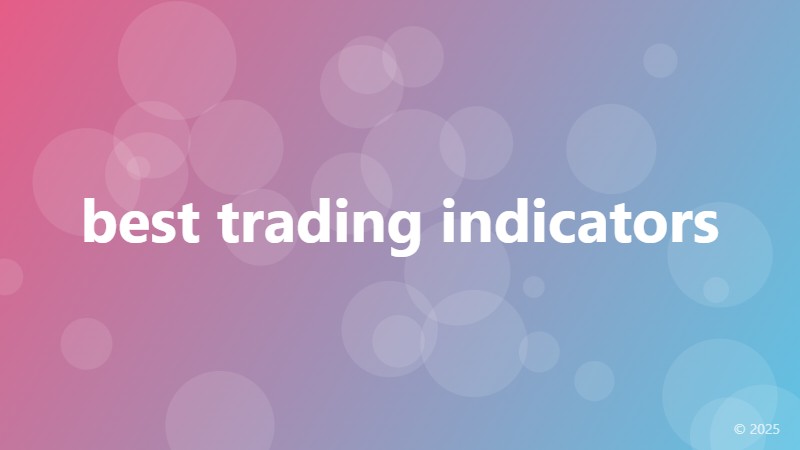best trading indicators

Unlocking the Secrets of Trading: Top Indicators for Success
As a trader, you're constantly on the lookout for an edge in the market. With so many indicators to choose from, it can be overwhelming to determine which ones are the most effective. In this article, we'll delve into the world of trading indicators and reveal the best ones to help you make informed investment decisions.
What Are Trading Indicators?
Trading indicators are mathematical calculations based on a security's price and/or volume that help traders identify patterns, trends, and potential trading opportunities. They can be broadly classified into two categories: leading and lagging indicators. Leading indicators anticipate price movements, while lagging indicators confirm trends.
Top Trading Indicators for Beginners
If you're new to trading, it's essential to start with indicators that are easy to understand and implement. Here are three beginner-friendly indicators that are highly effective:
1. Moving Averages (MA): A moving average is a trend-following indicator that smooths out price fluctuations, providing a clearer view of the trend. It's calculated by averaging the security's price over a specified period.
2. Relative Strength Index (RSI): The RSI measures the magnitude of recent price changes to determine overbought or oversold conditions. This indicator helps traders identify potential reversals and avoid false breakouts.
3. Bollinger Bands: Developed by John Bollinger, these bands consist of a moving average and two standard deviations plotted above and below it. They help traders identify volatility, breakouts, and potential trading opportunities.
Advanced Trading Indicators for Experienced Traders
Once you've mastered the basics, it's time to move on to more advanced indicators that can help you refine your trading strategy:
1. Stochastic Oscillator: This indicator compares the closing price of a security to its price range over a given period, providing insights into momentum and potential reversals.
2. Ichimoku Cloud: This comprehensive indicator provides a detailed view of the trend, identifying support and resistance levels, as well as potential breakouts.
3. Force Index: Developed by Alexander Elder, the Force Index measures the amount of energy or "force" behind a price move, helping traders identify strong trends and potential reversals.
Combining Trading Indicators for Maximum Effect
While individual indicators can be powerful, combining them can lead to even more accurate and reliable trading decisions. Here are a few popular indicator combinations:
MA + RSI: Using a moving average to identify the trend and the RSI to gauge momentum can help traders filter out false signals and ride the trend with confidence.
Bollinger Bands + Stochastic Oscillator: Combining Bollinger Bands with the stochastic oscillator can provide a comprehensive view of volatility, momentum, and potential reversals.
Conclusion
In conclusion, the best trading indicators are those that complement your trading strategy and risk tolerance. By understanding how to use these indicators effectively, you can gain a competitive edge in the market and make more informed investment decisions. Remember to always combine indicators, stay disciplined, and continuously monitor market conditions to achieve long-term trading success.